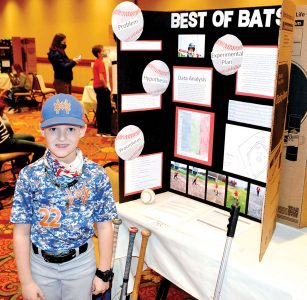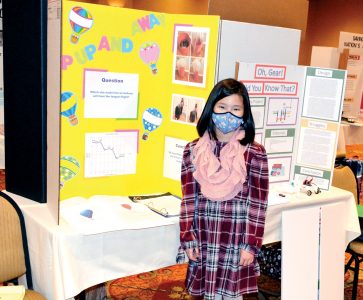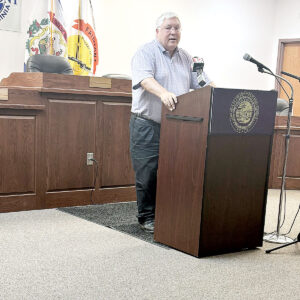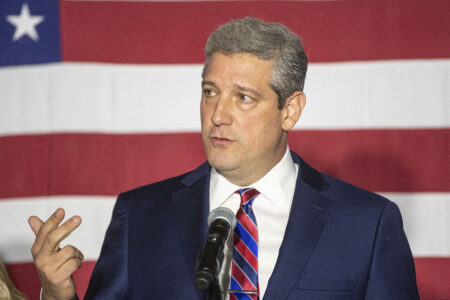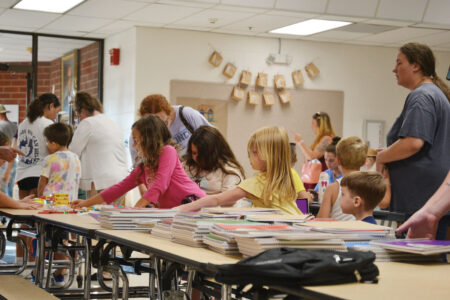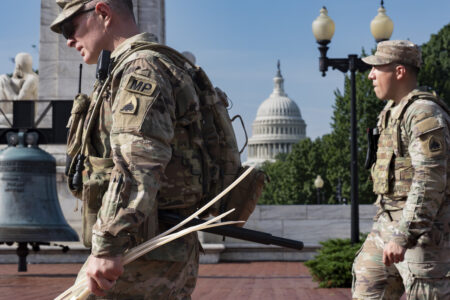Wood County students’ science projects prove more than fair
- Jace Riffle, a student at Jackson Middle School, did a project on bats and baseballs for the Wood County Science Fair on Thursday. (Photo by Larry Launstein Jr.)
- Eliana Higgins, a student at Blennerhassett Elementary School, did a project on model hot air balloons for the Wood County Science Fair on Thursday. (Photo by Larry Launstein Jr.)

Jace Riffle, a student at Jackson Middle School, did a project on bats and baseballs for the Wood County Science Fair on Thursday. (Photo by Larry Launstein Jr.)
VIENNA — This year’s Wood County Science Fair featured student exhibits from elementary, middle, and high schools and was very highly competitive, according to organizers.
Held at the Grand Pointe Conference and Reception Center in Vienna on Thursday, the judging went beyond its scheduled time, because, according to judge Diana Boston, of Jackson Middle School, the event had some of the best projects ever.
One of the exhibits was by Jace Riffle, a Vienna Elementary School student, about how baseballs fly on average from three kinds of baseball bats. Riffle said of his exhibit, “to test the wood, composite, and aluminum alloy (bats) to see which one had the highest average.”
He had a chart with a spread that showed where each ball landed for each bat, and the distance on average was measured. The bat that caused the baseballs to fly the furthest on average was the composite bat.
Another exhibit was featured by Macie Forshey, an Edison Middle School student, about how glow sticks get brighter under different states of water.

Eliana Higgins, a student at Blennerhassett Elementary School, did a project on model hot air balloons for the Wood County Science Fair on Thursday. (Photo by Larry Launstein Jr.)
Forshey said of her experiment, “I tested glow sticks and put them in room temperature water, hot water and ice water to see which ones are brighter.”
The glow stick done in hot water was the brightest, followed by the room temperature stick, and the cold water one.
Yet another exhibit was presented by Eliana Higgins, of Blennerhassett Elementary School, showing what size model hot air balloons flew the longest.
Higgins said about her exhibit, “We took poster board and we folded it and took a trash bag and set it on top and took three different size trash bags and turned the toaster on and see which one flew the longest.”
The balloons were 91, 81,and 71 centimeters in size, and the 91-cm sized balloon flew the longest. The toaster was used to provide the heat to make the balloons fly.
The judging criteria, according to judges Lisa Eakle and Holly Martin, were creativity of presentation, how the student came up with a research question, design of experiment, how effective it was in analyzing data, and how they answered their research question.
Candace Lewis, who is involved with math and science curriculum for Wood County Schools, said about the reason for the science fair’s existence, “The State of West Virginia hosts a science and engineering fair and in order to qualify, students have to go through their school, their county, and their regional.”
The science fair was held for over 40 years, but was canceled last year for COVID-19.
Larry Launstein Jr. can be reached at llaunstein@newsandsentinel.com

